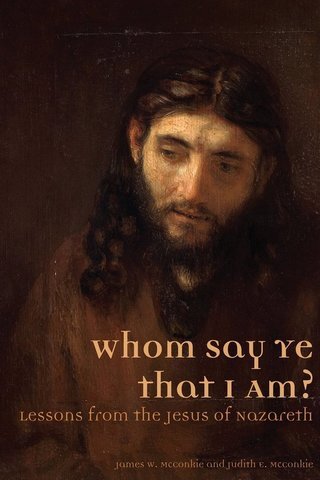In the decade it took for us to research, pray over, write, and re-write 18 essays about the Messiah, we read works by New Testament scholars. One whose specialty was social and religious customs in His day had a formula; he said that seeing the content or plot of a scripture in the context of its time and place revealed important messages. Simply put, he said, “Content in context is meaning.”
The value of that formula—to put the beliefs and traditions of first-century Palestine together with events and parables in Jesus’s life—was especially important when we studied the exchange between Jesus and a Samaritan woman He encountered at a place known as Jacob’s Well.
Using the formula, we created and answered three basic questions about the story in the fourth chapter of John’s gospel: 1) How did people in ancient Palestine view and treat women, especially a Samaritan woman? 2) How did Jesus’s conduct differ from expected norms? 3) What were the lessons to be learned from our studies?
1. How did people in ancient Palestine view and treat women, especially Samaritan women?
The Jewish historian Josephus wrote that Adam was cursed in the Garden “because he weakly submitted to the counsel of his wife.” Therefore, “a woman is inferior to her husband in all things.”
Historians tell us that it was common for devout Jews to offer the following prayer each morning: “Blessed are you, Lord, our God, ruler of the universe, who has not created me a woman.”
A woman’s world was bounded entirely by the walls of her home. Men, and especially rabbis, were forbidden from addressing, speaking with, or touching a woman in public.
Women were considered the property of their fathers or husbands, who could divorce their wives for an offense as simple as burning dinner by writing the words “You are hereby permitted to all men” on a piece of paper called a get and handing it to the woman. The implication was clear that divorced women could be used or abused by any male.
Wells in ancient Palestine were places where women went to collect the day’s drinking and culinary water for a household. For a man to meet a woman alone at a well was considered scandalous.
Men, particularly Jewish men, were never to engage a woman in a theological discussion. Women were not considered to have the intellect to speak of such matters.
Samaritans were considered to be impure and Jews in name only. They had built their own temple. They had their own version of the Torah.
A demeaning expletive a Jewish man might utter in anger was to call another a “Samaritan!”
Most observant Jews avoided traveling through Samaria. But if it became necessary, upon leaving the region, they would clean even Samaria’s dust from their sandals.
2. How was Jesus’s conduct with the Samaritan woman at Jacob’s Well different from those expected behaviors?
John’s gospel tells us that Jesus and the disciples were on their way home from Jerusalem. Tired and hungry, they had stopped for water at a well near the town of Sychar in Samaria.
The disciples had gone on to the village for something to eat. Jesus found himself alone with a woman who was a known adulteress. Despite knowing her past, He asked her for water. He listened to her and spoke to her about the “living water” He offered. He asked her to go back to the village to bring others out to hear His message—to be His emissary to those “righteous” Jews would have shunned. When His disciples returned to the well, He taught them by example how they were to treat her and the others.
3. What were the lessons we learned from that exchange?
Because Jesus disregarded every taboo and cultural norm a good rabbi would have known, He was behaving in ways that teach us about His perfect love and concern for all of His Father’s children. As a result, the young church allowed women to have expanded roles: we are told they were deaconesses, missionaries, participants in meetings, founders and leaders of churches, and prophetesses. He demonstrated that for Him and His Father “there is neither Jew nor Greek, there is neither bond nor free, there is neither male nor female: for [we] are all one in Christ Jesus” (Gal. 3:28). True Christians would attempt to count every man and woman with the same respect, authority, and kindness. We moderns who call ourselves Saints are under covenant to do the same.
Image by Paolo Veronese, Jesus and the Samaritan Woman, retrieved from Wikimedia Commons
James and Judith McConkie are the authors of Whom Say Ye That I Am: Lessons from the Jesus of Nazareth, published by Kofford Books. It is available at Deseret Book stores and online and through barnesandnoble.com and amazon.com. This is the first in a series of essays about the book. Watch for them on ldsliving.com.



